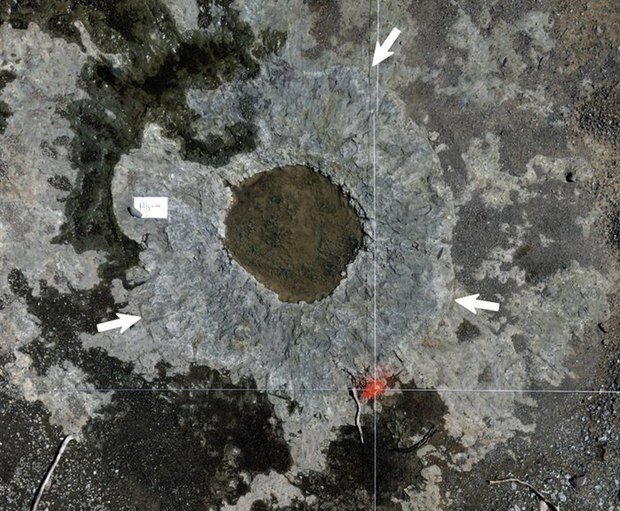Researchers analyzing one of the radial Archaeopteris tree root systems at the Cairo, New York, site
By The Nexus Gazette.
25th August, 2024.
In a groundbreaking revelation, scientists have uncovered what is believed to be the world’s oldest known forest, dating back approximately 386 million years. This remarkable discovery, made in a sandstone quarry in the Catskill Mountains of New York, offers an unprecedented glimpse into the early evolution of terrestrial ecosystems.
The fossilized root systems, found near the town of Cairo, New York, represent a significant leap in our understanding of early forest development. This newly identified forest predates previous records by 2 to 3 million years, challenging established timelines and providing fresh insights into the Devonian period—a crucial era in Earth’s history. The site reveals three distinct types of root systems, suggesting a diverse and intricate forest structure at an astonishingly early stage.

Among the fossilized remains, scientists have identified several ancient tree species that shed light on the evolution of early forests:
- Archaeopteris: This tree species, with characteristics akin to modern conifers, is considered a precursor to contemporary trees. Its discovery highlights the early development of tree-like structures and their role in shaping the ancient landscape.
- Eospermatopteris: Known for its short-lived roots, Eospermatopteris demonstrates a different evolutionary strategy, providing insight into the adaptability and diversity of early plant life.
- Scale Trees: From the class Lycopsida, these scale trees were previously thought to have appeared millions of years later. Their presence in this ancient forest suggests a more complex and developed ecosystem than previously understood.
The discovery of this ancient forest holds significant implications:
- Forest Structure and Function: The sophisticated root systems unearthed suggest that early trees had developed efficient mechanisms for water and nutrient uptake, crucial for supporting large plant structures. This finding offers a clearer picture of how early forests were structured and functioned.
- Impact on Earth’s Climate: Early forests played a pivotal role in shaping the planet’s climate by capturing carbon dioxide. The reduction of atmospheric CO2 contributed to a cooler global climate, highlighting the long-term impacts of forest ecosystems on Earth’s climate and ecology.
- Lessons for Today: Understanding these ancient ecosystems provides valuable insights into the long-term effects of deforestation and climate change, emphasizing the importance of preserving modern forests to maintain ecological balance.
The site in Cairo, New York, remains a focal point for ongoing paleobotanical research. Scientists are eager to uncover more fossils and delve deeper into the study of these ancient root systems. This research not only enriches our understanding of early forest evolution but also underscores the complexity and resilience of Earth’s ecosystems.

The discovery of the world’s oldest forest marks a remarkable achievement in the field of paleobotany. It provides a unique window into the distant past, revealing the early stages of forest development and their profound impact on Earth’s climate and ecology. As research continues, the ancient landscape of this 386-million-year-old forest promises to yield even more insights into the history of our planet.
Resources:
3.https://www.sciencedaily.com/releases/2024/03/240307110751.htm
4.https://www.cam.ac.uk/stories/earths-earliest-forest-somerset